Mitla
Mitla (nombre completo: San Pablo Villa de Mitla) es un pueblo cerca de la ciudad de Oaxaca de Juárez. El nombre Mitla significa 'Lugar de los muertos' en nahuatl. En el idioma zapoteco el nombre del lugar es Lyobaa, o lugar de sepultura. Ha sido un lugar habitado desde al año 500 a. de C.
Mitla (full name: San Pablo Villa de Mitla) is a town close to the city of Oaxaca de Juarez. The name Mitla means "place of the dead" in Nahuatl. In the Zapotec language the name of the place is Lyobaa, or burial place. The locale has been inhabited since the year 500 BCE.
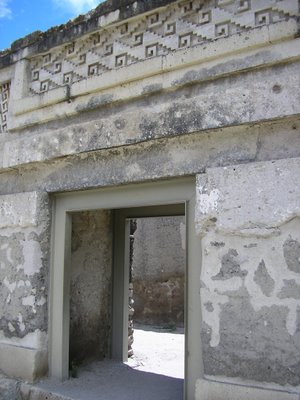
Pintura que perdura desde la época de construcción de lo que ahora son las ruinas.
Paint that has lasted since the time of construction of what today are the ruins.
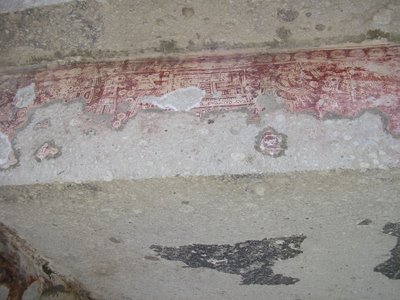

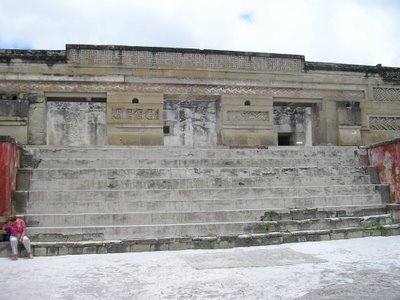

En 1901 y 1902 Leopoldo Batres fue el arqueólogo encargado de estudiar las ruinas de Mitla. Dejó este mensaje grabado en la piedra de una pared del Palacio de las Columnas: 'Aviso: Está prohibido escribir letreros en los muros de estos edificios...'
In 1901 and 1902 Leopoldo Batres was the archaeologist in charge of studying the ruins of Mitla. He left this message engraved in the stone of one of the walls in the Hall of the Columns: "Attention: Writing on the walls of these buildings is prohibited..."

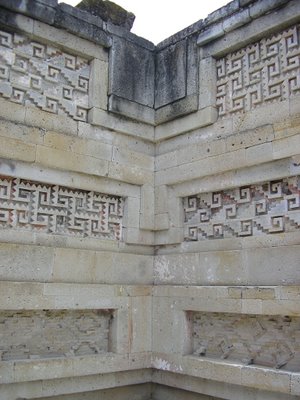
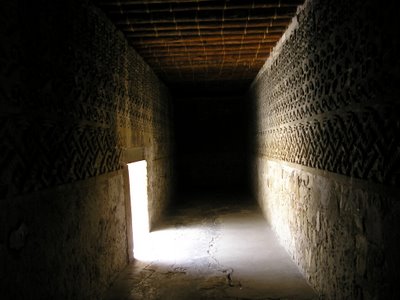
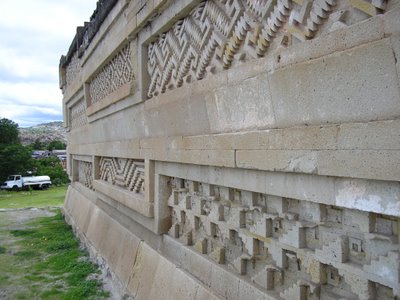
En la escalera del Palacio de las Columnas, con una columna caída en el patio.
On the stairway of the Hall of the Columns, with a fallen column in the courtyard.
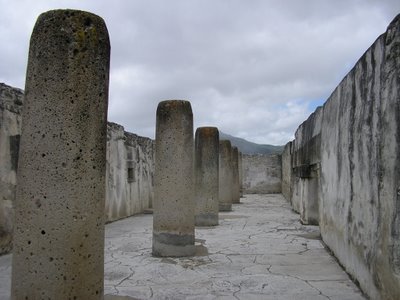
Parte del Grupo de las Columnas con la entrada a la Tumba 1.
Part of the Group of the Columns with the entrance to Tomb 1.

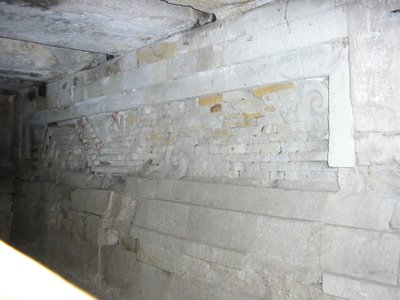
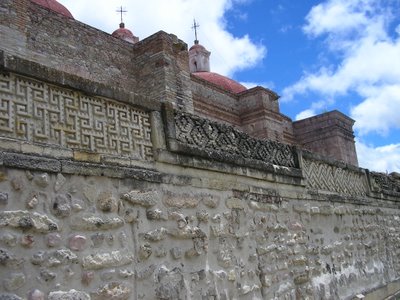
Mitla (full name: San Pablo Villa de Mitla) is a town close to the city of Oaxaca de Juarez. The name Mitla means "place of the dead" in Nahuatl. In the Zapotec language the name of the place is Lyobaa, or burial place. The locale has been inhabited since the year 500 BCE.
La iglesia de San Pablo en Mitla, construido usando piedras de las ruinas.
The church of Saint Paul in Mitla, built using rocks from the ruins.
The church of Saint Paul in Mitla, built using rocks from the ruins.

Pintura que perdura desde la época de construcción de lo que ahora son las ruinas.
Paint that has lasted since the time of construction of what today are the ruins.



La fachada del Palacio de las Columnas con Len, Eloy y Alejandra en primer plano y una antena satélite al fondo.
The facade of the Hall of the Columns with Len, Eloy and Alejandra in the foreground and a satellite dish in the background.
The facade of the Hall of the Columns with Len, Eloy and Alejandra in the foreground and a satellite dish in the background.

En 1901 y 1902 Leopoldo Batres fue el arqueólogo encargado de estudiar las ruinas de Mitla. Dejó este mensaje grabado en la piedra de una pared del Palacio de las Columnas: 'Aviso: Está prohibido escribir letreros en los muros de estos edificios...'
In 1901 and 1902 Leopoldo Batres was the archaeologist in charge of studying the ruins of Mitla. He left this message engraved in the stone of one of the walls in the Hall of the Columns: "Attention: Writing on the walls of these buildings is prohibited..."


El techo reconstruido en la forma en que se construía antiguamente en Mitla.
A roof reconstructed in the way the roofs were originally constructed in Mitla.
A roof reconstructed in the way the roofs were originally constructed in Mitla.


En la escalera del Palacio de las Columnas, con una columna caída en el patio.
On the stairway of the Hall of the Columns, with a fallen column in the courtyard.

Parte del Grupo de las Columnas con la entrada a la Tumba 1.
Part of the Group of the Columns with the entrance to Tomb 1.







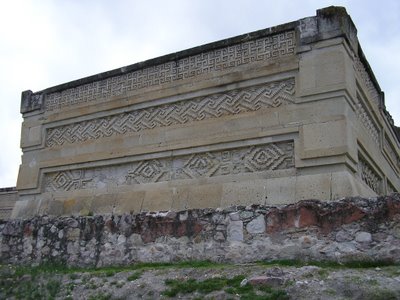

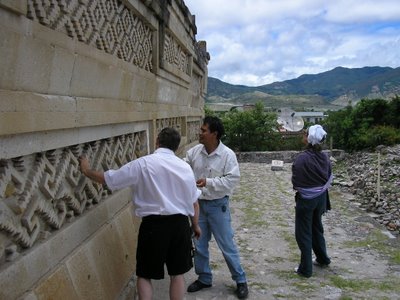


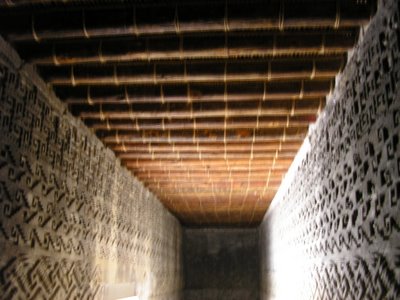
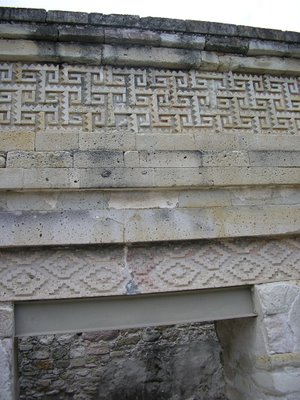
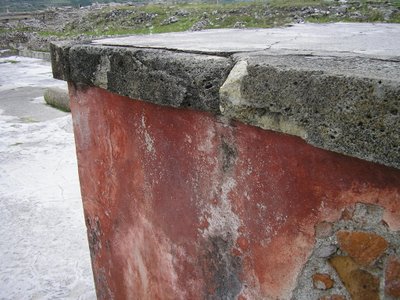
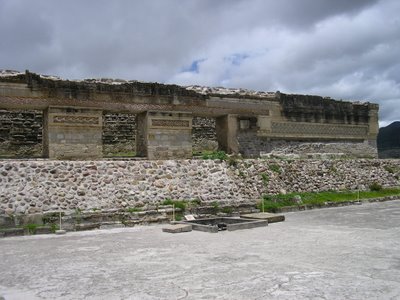
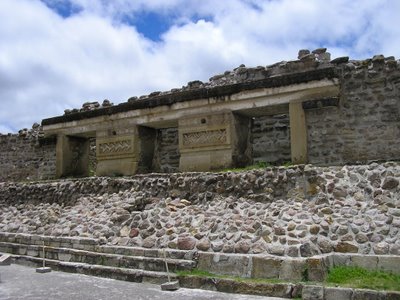
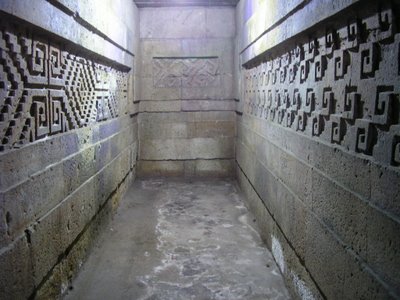

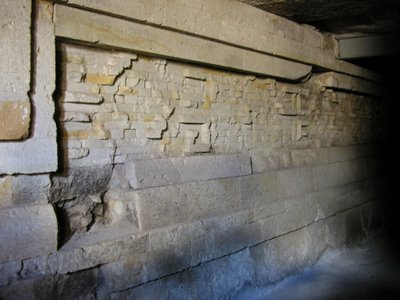
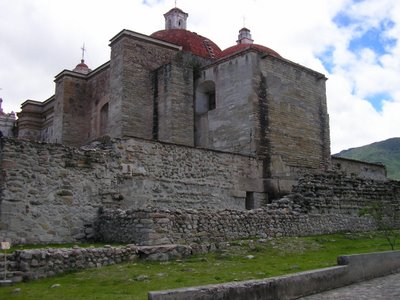
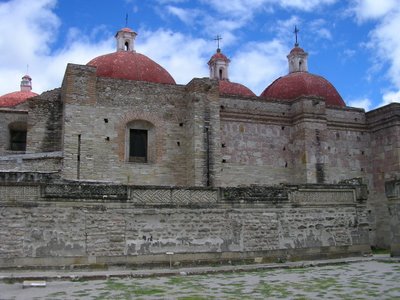
<< Home